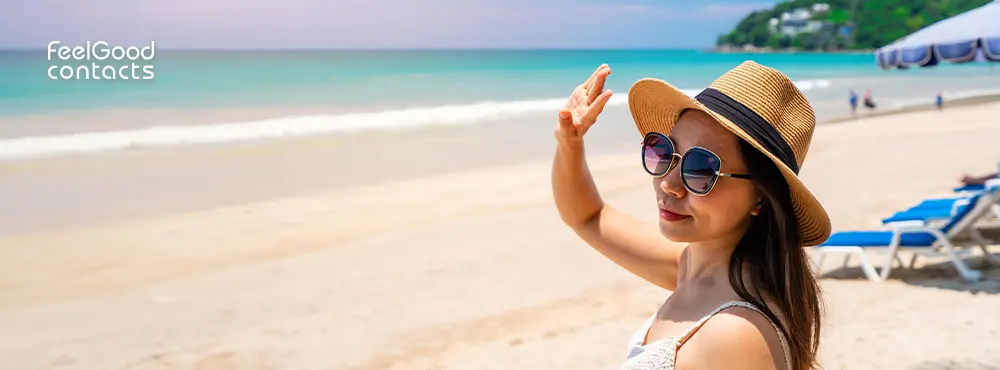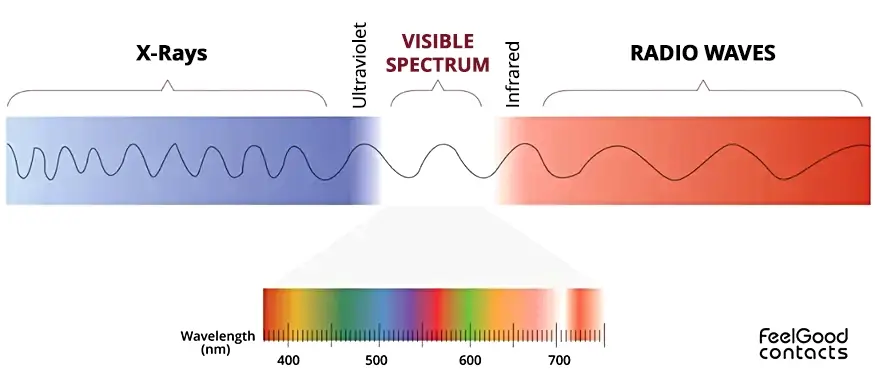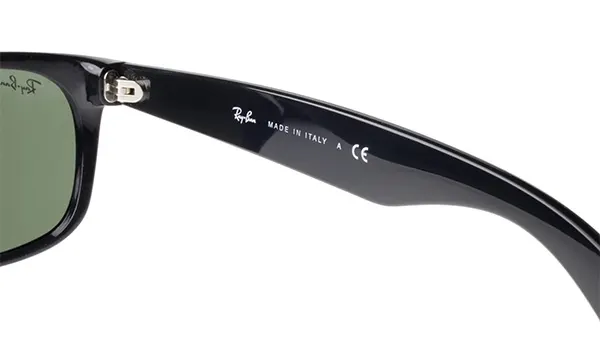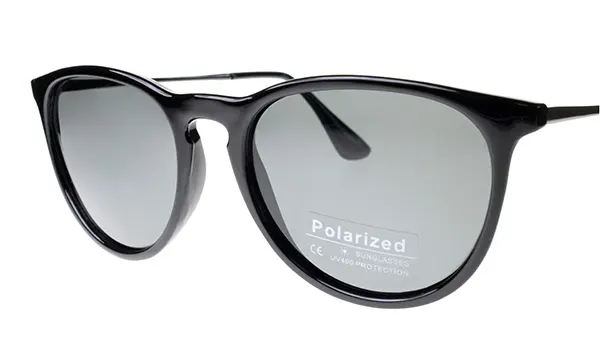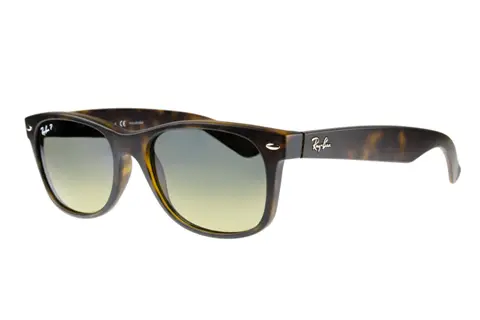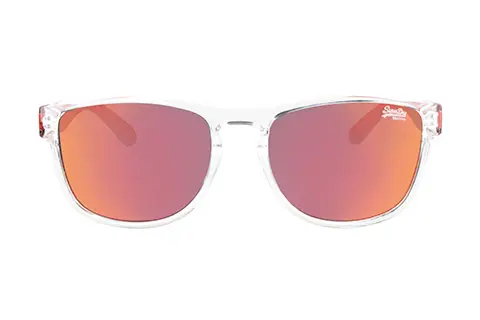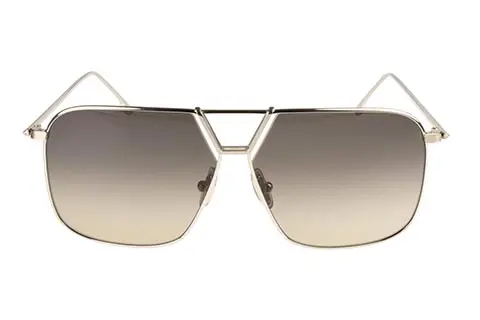Photochromic sunglasses
These lenses adapt to the daylight, darkening in bright conditions and lightening in overcast weather. They’re a convenient option for those who want glasses that work both indoors and outdoors.
Do affordable sunglasses offer UV protection?
Absolutely! You don’t need to break the bank to get sunglasses with excellent UV protection. At Feel Good Contacts, you can get up to 60% discount on sunglasses from popular brands which offer 100% UVA and UVB protection.
Things to consider while choosing a pair of sunglasses
There are many factors that one should consider while choosing a pair of sunglasses. Here are some of those factors.
1. Frame Fit
To effectively shield your eyes from UV rays, your sunglasses must fit properly. Look for lenses that provide full coverage, preventing sunlight from sneaking in at the top or sides. Wrap-around styles are great for sports and outdoor activities as they block light from all angles.
2. Frame shape and style
Go for the styles that complement your face. When choosing sunglasses, consider which shapes and styles will suit your face the best. With our virtual try-on feature, you can actually see how a particular pair of sunglasses will look on you and decide whether it will suit your style.
3. Features to go well with your lifestyle
Pick sunglasses that go well with your lifestyle. Choose sunglasses based on your daily activities. For casual wear, pick a comfortable pair with good UV protection. Opt for fashionable, statement-making frames that still offer UV protection. For sports, go for wrap-around sunglasses with a secure fit and shatterproof lenses. When driving, consider sunglasses with polarised lenses to reduce glare or yellow/amber-tinted lenses for better visibility in low-light conditions.
4. Sunglasses frame and lens materials:
Weight, durability and style are all influenced by the frame material. Metal frames are lightweight and strong but may be more costly and unsuitable for high-impact activities. Plastic frames are affordable, lightweight and are available in various colours and styles.
5. Lens coatings:
An anti-reflective coating minimises glare from the back of the lens, enhancing clarity and reducing eye strain. Your lenses are protected against everyday wear and tear with a scratch-resistant coating.
6. Colour and tint:
Different lens colours and tints can affect your vision, so choose the one that suits you the best. Grey-tinted glasses reduce overall brightness, amber-tinted glasses enhance depth perception in low light, mirrored lenses decrease the amount of light, and gradient lenses are darker on the top than the bottom and are suitable for driving and everyday use.

 Offers
Offers Account
Account
 Favorite
Favorite
 Basket
Basket

 OFFERS
OFFERS











